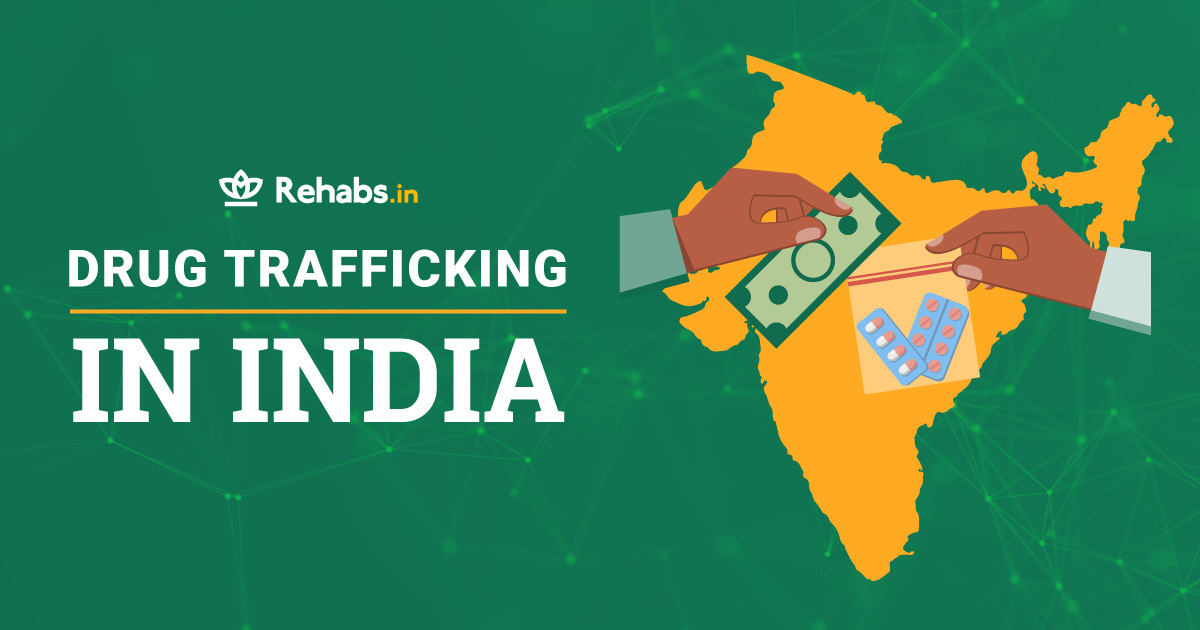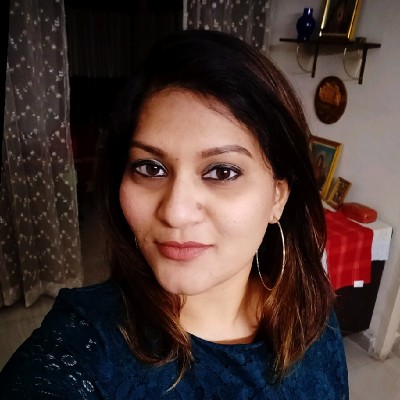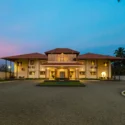Drug Trafficking in India

India has a long and interesting history when it comes to drugs. From Vedic times, Cannabis, popularly known as Marijuana has been used for various medical purposes and religious ceremonies and festivals. In fact, it is one of the five sacred plants mentioned in the Vedas and was known as ‘Vijaya’. Interestingly, Lord Shiva was also known as Lord of Vijaya, and his followers to this day, smoke Ganja or have Charas to reach a trance-like meditative state. In 330 BC Alexander the Great introduced opium to the people of India and once again it was widely used for its medicinal properties. From the Mughal Era onwards, opium became a popular and widely used recreational drug. The British East India Company assumed total control of opium cultivation and began trading it where it was legal and smuggling it where it was illegal.
So lucrative was this business of drugs that the British colonial rulers forced large-scale conversion of paddy fields into poppy cultivation in the region of Bengal. This led to “The Great Bengal Famine” of 1770 that caused the deaths of 10 million people in the region. Less than 70 years later the Opium Wars took place when China attempted to suppress the opium trade which was being illegally exported from India to China by foreign traders- primarily the British. Millions of Chinese were addicted to opium and the Qing Dynasty wanted to curb this problem, however, for the British colonial rules it was a lucrative market that was waiting to be exploited.
The Changing Nature of Drugs in India
India’s history shows that her people were tolerant towards the use of drugs like Charas and Ganja. It was never seen as an evil that needed to be uprooted. However, times have changed. Today smoking cannabis is in the same league as smoking tobacco. It’s the synthetic drugs that are now ruling the markets world over, India included.
Today the most popular drugs are synthetic drug varieties like Amphetamine and Methamphetamine. Designer drugs like MDMA, Ketamin, GHB, Rohypnol, etc. are popular party drugs. Also, apart from the ever-popular opium and morphine which come under the category of narcotics, a wide variety of hallucinogens like Lysergic Acid Diethylamide (LSD), Dimethoxy Methylene Amphetamine (STP), DimethylTryptamine (DMT), Mescaline and Phencylidine (PCP) are also smuggled into India.
Recreational drugs are more dangerous, harmful and at times even deadly. These drugs not just ruin lives but also have the power to destabilise governments and create international conflicts. Millions upon millions of lives are now at stake.
What is Drug Trafficking?
Drug trafficking can be defined as a global illicit trade involving the cultivation, manufacture, distribution and sale of substances which are subject to drug prohibition laws. Drug trafficking is often associated with other forms of crime, such as human trafficking, terrorism, slave trade, illegal organs trade and money laundering.
Nearly 70% of these narcotics and drugs are trafficked over land using various modes of transportation and the country’s borders are the first point of contact for drug trafficking. With the help of the poor, uneducated Indians living on the borders of India, traffickers are able to move these illegal drugs with ease. Drug traffickers are now increasingly using the sea routes both on the east and west coast of India, as patrolling on land becomes more vigilant. The Bay of Bengal, the Rann of Kutch, the Mumbai port are all important points for entry of drugs in the country. Air routes although risky are used by the traffickers to smuggle various drugs through personal carriers, postal services, etc. Delhi and Mumbai continue to remain the most important airports from where drugs are smuggled internationally. Every year maximum quantities of drugs are seized at these two airports.
Drug Trafficking Patterns and Routes in India
India’s proximity to the Golden Crescent and Golden Triangle (the major opium production regions in the world) has made India a hub of drug trafficking. Drugs arrive into India from Afghanistan, Iran, Pakistan, Thailand, Myanmar, Bhutan through its shared borders with these countries.
Depending upon the nature and geography of the border, as well as the production, demand and supply of drugs, different borders have different trafficking patterns.
General global pattern of the flow of illegal drugs showcases that among all drugs, heroin and cocaine are trafficked for much longer distances while hashish is smuggled for a comparatively shorter distance. Marijuana/Ganja and psychotropic substances like Amphetamine Type Stimulants (ATS), which are widely popular and consumed locally travel the shortest distance among all drugs.
In the following paragraphs, you will learn more about why India is so vulnerable to drug trafficking.
Drug Trafficking Through the Golden Crescent
‘Golden Crescent’, is the name given to one of Asia’s two main areas of illicit opium production (the Golden Triangle is the other hub), located at the crossroads of Central, South, and Western Asia. This region overlaps three countries, namely Afghanistan, Iran, and Pakistan. The mountainous terrains that form the borders of these countries are the reason why it is called the crescent.
Heroin and hashish produced in the ‘Golden Crescent’ region are trafficked into India through the border states of Gujarat, Rajasthan, Punjab and Jammu and Kashmir. The most preferred route has been the Thar desert as it has been a traditional route from the time of the Chinese Colonial Era. The desert is vast and poorly guarded and has ample hideout spots. Drugs are smuggled in from across the border on camel backs and once the consignment reaches the collection centre, it is transported to other major cities by vehicles. In addition to these traditional routes, the Thar Express plying between Jodhpur and Karachi and the Samjhauta Express plying between Old Delhi and Lahore junction have been reported to have become major carriers of drugs.
The reason Punjab has such a huge drug addiction problem is that it is transit as well as a destination point for heroin manufactured in the Golden Crescent region. Moreover, heroin smuggled in through Punjab and Rajasthan is shipped to Mumbai and Tamil Nadu from where it is trafficked to international markets. Also, terrorist organisations in Jammu and Kashmir, help the movement of heroin in India through the Jammu sector which ultimately reaches Mumbai through Pathankot-Gurdaspur-Amritsar-Faridkot Jaisalmer/Barmer-Ahmedabad route.
With more patrolling along the land borders, drug traffickers are now using sea routes. The marshlands and creeks of Gujarat are progressively being used to smuggle heroin from Afghanistan-Pakistan region. Heroin is trafficked into the Rann of Kutch from Karachi in various country-made boats. Along the west coast of India, Mumbai is a major port through which drugs illegally enter as well as exit the country.
Drug Trafficking Through the Golden Triangle
‘Golden Triangle’, is the name given to the region where the borders of Thailand, Laos, and Myanmar meet at the confluence of the Ruak and Mekong rivers. This area covers approximately 950,000 square kilometres (367,000 sq mi) of mountainous areas of the three adjacent countries.
There is a two-way smuggling operation of narcotics and drugs through India- Nepal and India-Bhutan borders. Nepalese and Bhutanese cannabis is smuggled into India and pharmaceutical preparations containing psychotropic substances prescribed as painkillers and anti-anxiety drugs such as diazepam, alprazolam, nitrazepam, lorazepam, proxyvon, buprenorphine, etc. are trafficked from India to Nepal and Bhutan.
Nearly 95% of the total opium produced in the Golden Triangle region is produced in Myanmar. Almost 80 to 85% enters the international market through Myanmar-Thailand route, the remaining enters India through the poorly guarded India-Myanmar border. From there it is trafficked through the Indian states of Mizoram, Manipur, and Nagaland.
The India and Bangladesh border has been vulnerable to the smuggling of various kinds of drugs ranging from heroin, marijuana/ganja, hashish, brown sugar, cough syrups, etc. There is a well-developed network of railways and river routes that has enabled the smuggling of pharmaceutical preparations containing dextropropoxyphene and codeine from India to Bangladesh. More often than not, drugs are trafficked across the border by individual carriers who largely consist of poor women and children employed by ruthless drug lords. As these individuals do not raise any suspicions, they can easily cross the borders undetected.
Over the last few years, sea routes are being used to smuggle consignments of heroin and ketamine to East and Southeast Asian countries like Malaysia, Singapore, Thailand, Taiwan and China. Seized consignments have been traced back to Chennai, Trivandrum and Calicut, signifying that drugs are being trafficked in large container vessels from these ports. Kolkata and Chennai ports are also being used to traffic Manipuri Ganja, and precursor chemicals to international markets.
Drug Trafficking Online and Through Dark Net
There is a significant rise in trafficking of drugs through the Internet especially through the darknet (portions of the internet that lie off the map, and is accessible only through special permissions and specific software).
“Illicit internet pharmacies”- particularly those on the darknet- are used to traffic drugs like cocaine, heroin, cannabis, methaqualone, and ketamine. There have been reports of over 1000 drug listings from India published across 50 online crypto-market platforms. This form of trading using cryptocurrencies has already spread across South Asia, including India. Cryptocurrencies like Bitcoin, Ethereum, Litecoin, etc. allow consumers to make electronic transactions by skipping the legal banking channels. This makes the detection of drug trafficking difficult.
Drug Trafficking and its Impact on Security of the Nation
India has been on the receiving end of terrorism since the 1970s and is among the top ten countries in the world affected by terrorist actions. Terrorism requires a lot of money and more often than not they are funded by drug trafficking operations. Not surprisingly, major opium/cannabis cultivation areas of the world are also home to terrorist organisations like the Lashkar-e-Taiba, Jaish-e-Mohammed, Al Badr & Hizbul Mujahideen, ULFA, Naxalites and Maoist.
Today, the three key trouble areas in India are Jammu & Kashmir, the eastern “Red Corridor” (the Naxalite–Maoist insurgency affected regions of Andhra Pradesh, Bihar, Chhattisgarh, Jharkhand, Madhya Pradesh, Maharashtra, Odisha, Telangana, and West Bengal and eastern Uttar Pradesh states), and the hills of North-eastern India. Jammu & Kashmir has been facing the brunt of Islamist terrorist groups, the “Red Corridor” has been greatly troubled by the Left-Wing and the seven sisters of Northeast India by Tribal/Separatist respectively.
Tackling Drug Trafficking Problems in India
India has always taken a firm stand against drug trafficking and drug use. To that effect, the Narcotic Drugs and Psychotropic Substances Act (shortened to NDPS Act) came into force on 14 November 1985. Under the NDPS Act, it is illegal for any person to produce/ manufacture/cultivate, possess, sell, purchase, transport, store, and/or consume any narcotic drug or psychotropic substance. The Act has been amended three times – in 1988, 2001, and 2014. The Act extends to the whole of India and it also applies to all Indian citizens outside India and to all persons on ships and aircraft registered in India.
To enable the full implementation of the NDPS Act, the Narcotics Control Bureau (NCB) was created on 17 March 1986. The NCB is the chief law enforcement and intelligence agency of India responsible for fighting drug trafficking and the abuse of illegal substances.
The NCB is aided in its efforts by the Central Bureau of Narcotics (CBN) and The Narcotic Control Bureau (NCB). Other key agencies that work closely in seizing and busting drug operations are Directorate of Revenue Intelligence, Central Bureau of Investigation, Customs Commission and Border Security Force.
These agencies are always there to control the drug trafficking problem in India, however, there is still a long way to go. We need stricter laws, stringent punishments and absolutely zero tolerance towards drugs.
Sources
http://cbn.nic.in/html/opiumhistory1.htm
https://idsa.in/system/files/OP_DrugTraffickinginIndia.pdf
https://en.wikipedia.org/wiki/Golden_Crescent
https://idsa.in/system/files/OP_DrugTraffickinginIndia.pdf
https://idsa.in/system/files/OP_DrugTraffickinginIndia.pdf
https://www.arcgis.com/apps/Cascade/index.html?appid=db9afebe57834d1a8d3089c82c3bf781
https://www.researchgate.net/publication/343760908_Narco-terrorism_-A_threat_to_national_security
https://www.latestlaws.com/articles/drug-trafficking-in-india-legal-perspective-by-yash-soni/














